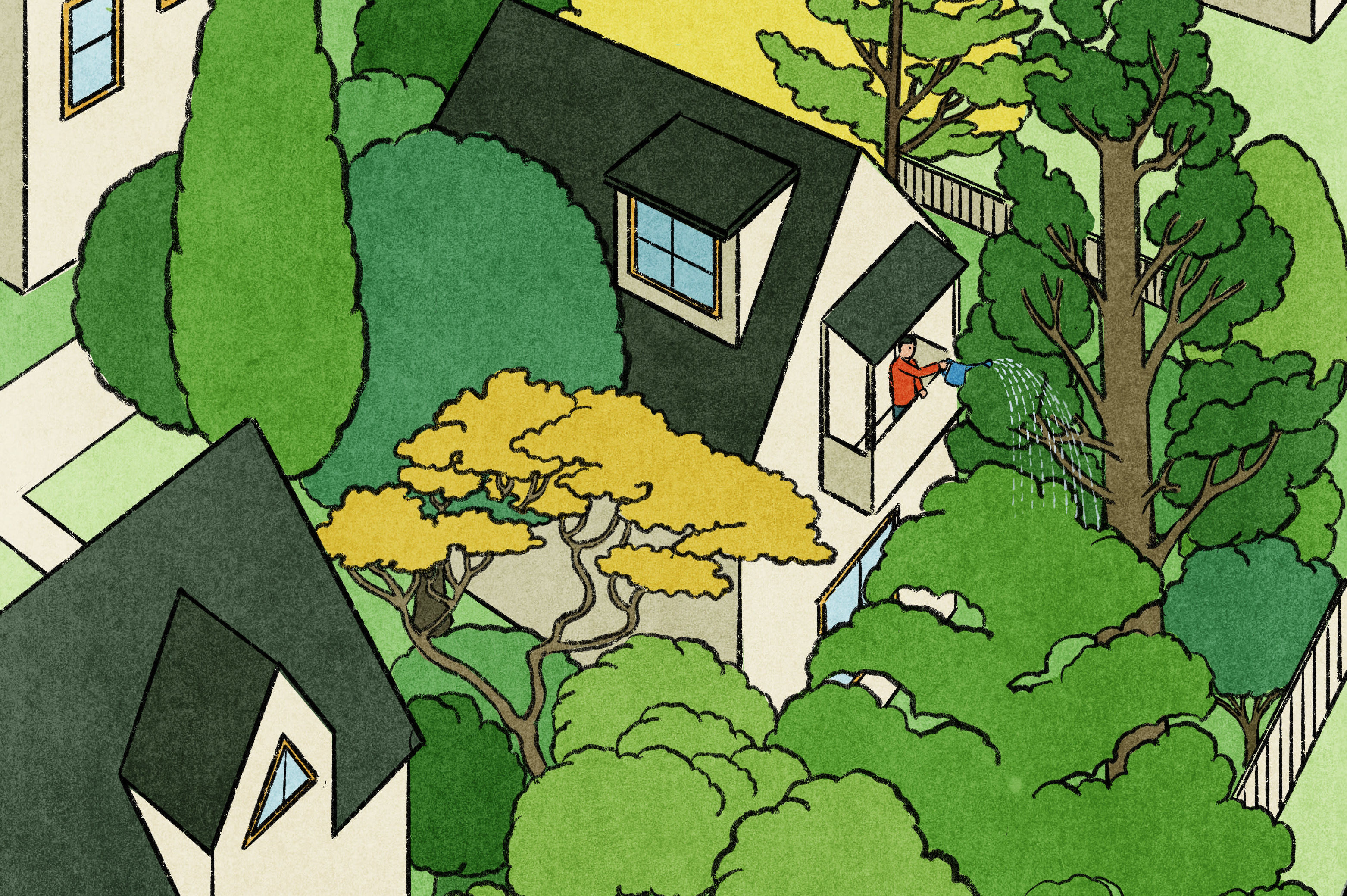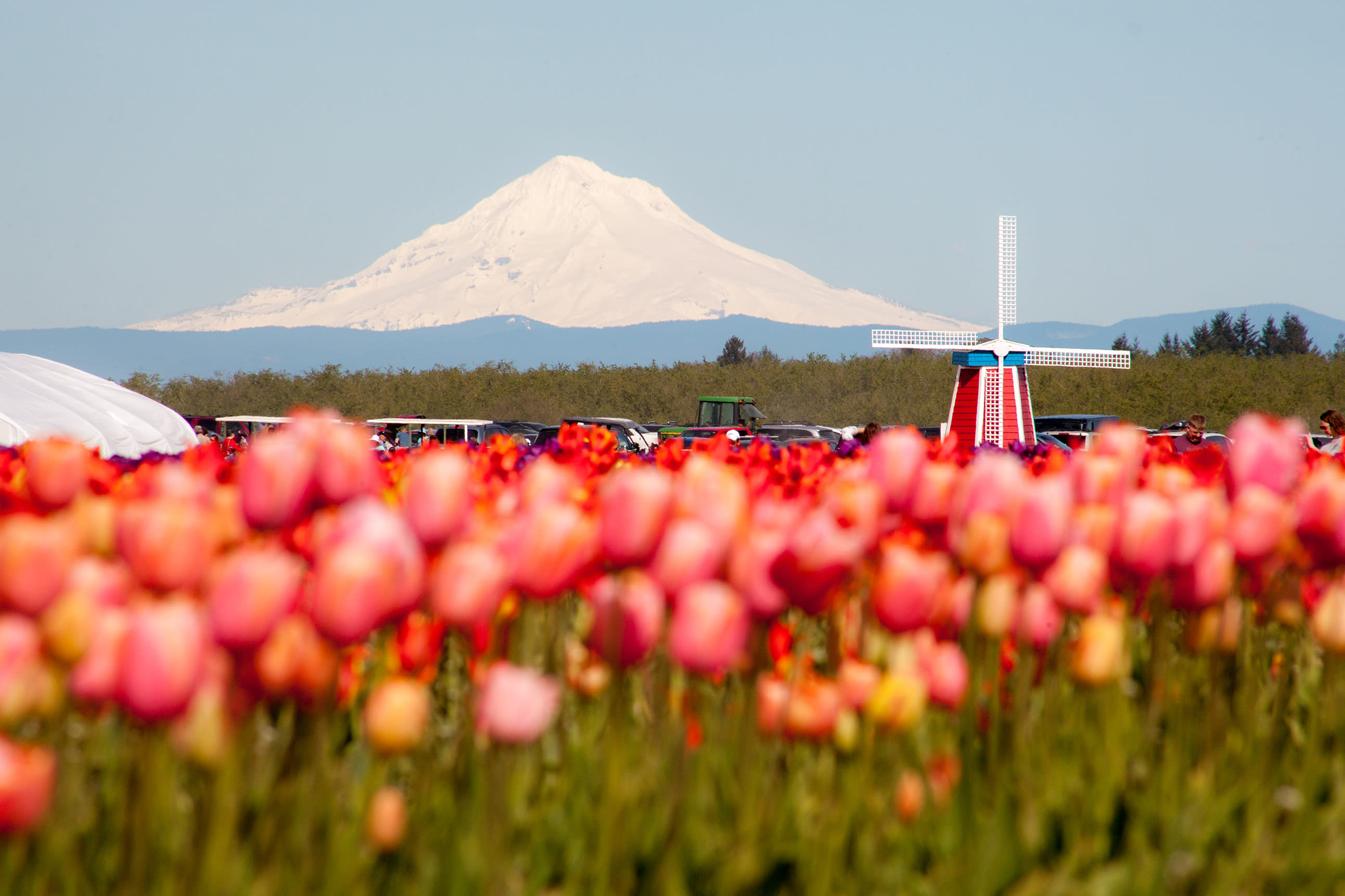The Portland Japanese Garden Beckons You to Visit
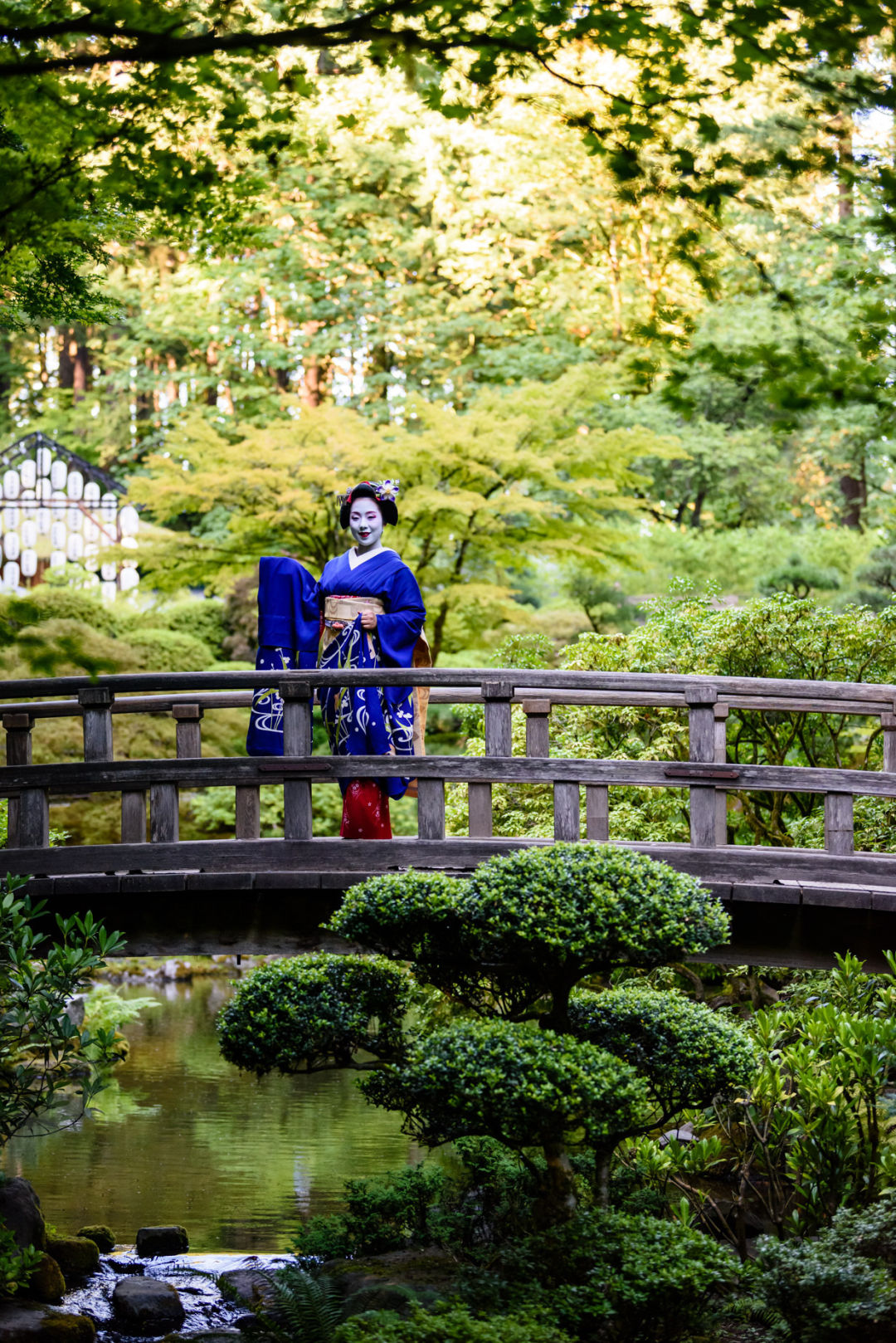
Image: NashCO Photo
cherry blossoms burst like a fresh watercolor painting. Rhododendron, azalea, iris, and wisteria begin to unfurl their tender petals. It’s springtime at Portland Japanese Garden where new, rotating cultural demonstrations and exhibits provide opportunities to experience Japanese culture in profound ways.
While spring is a particularly special time for many Oregonians to visit the gardens, there really is no bad time. In fact, each season brings something different. Traditional Japanese gardening relies heavily on featuring the many shades of green present year-round, as opposed to western gardens that highlight explosions of color more prominently, lending themselves best to spring. Japanese gardens use small pops of hue among the evergreen to charm rather than dazzle.
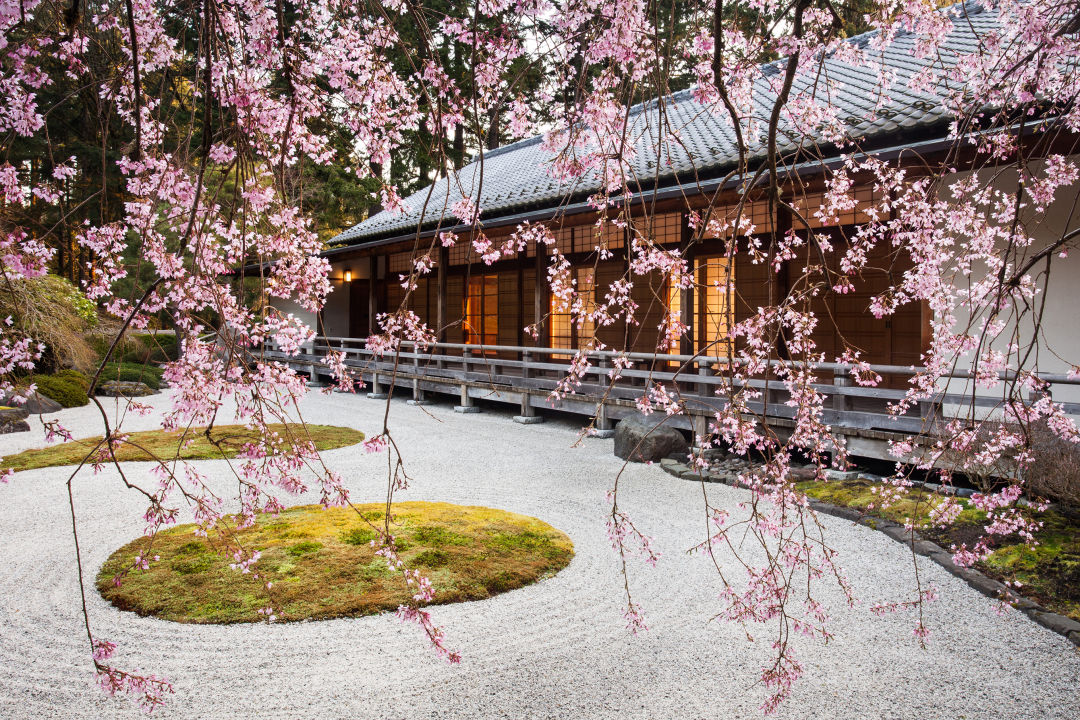
A weeping cherry adds a touch of color.
From the moment you step foot on the rambling 12-acre property nestled into southwest Portland’s Washington Park, stress seems to melt away like morning dew—serenity reigns. On sunny spring days, the park is teeming with life of both the plant and human variety.
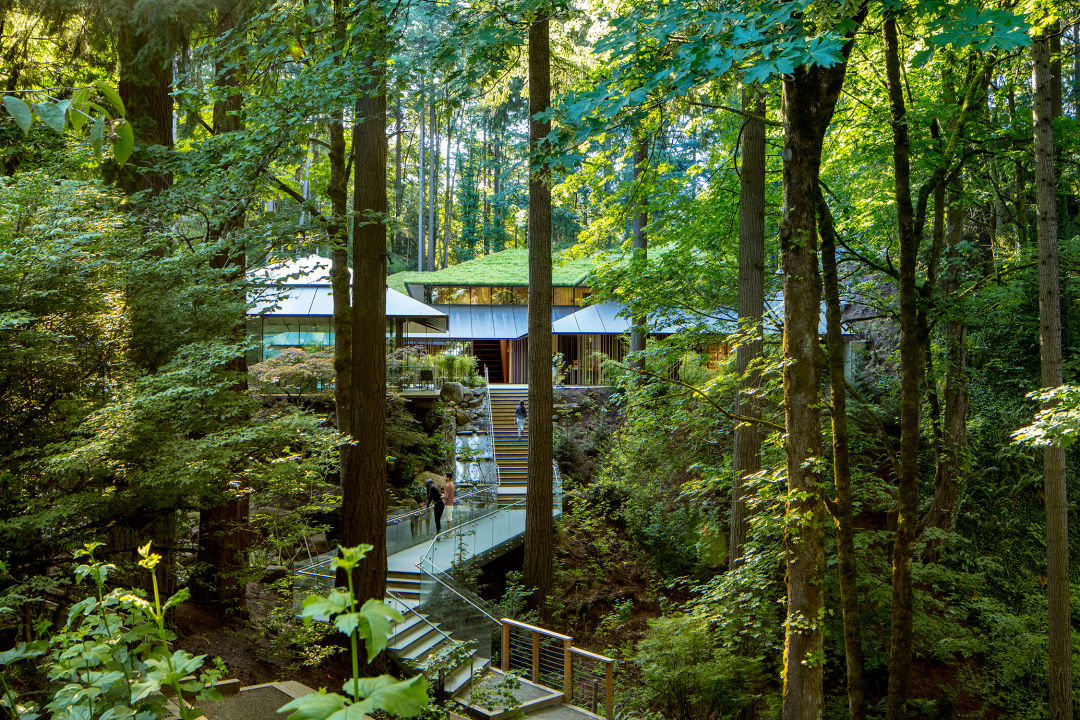
The entry garden to the cultural village.
It's a bit of a hike up a steep, meandering path to get to the Japanese garden’s cultural village. An in-garden shuttle bus is available to take anyone not up for the short yet intensely gradient walk. There are several spots throughout the property with stairs and uneven paths, something to be aware of for those with disabilities. Families with small children might opt for carriers rather than strollers.
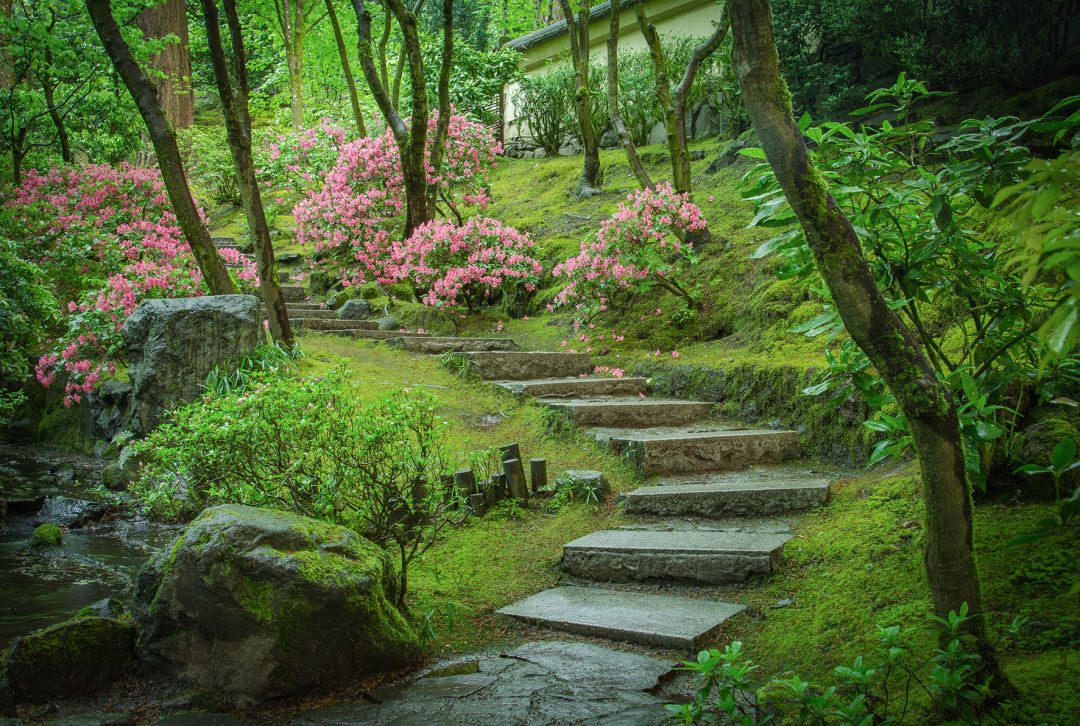
Azaleas line the Natural Garden stairs.
From the cultural village, you’ve got many options. The village includes an informational concierge, the Umami Café, a small gift shop, and the Japanese arts learning center, as well as access to the bonsai terrace where you can view rotating bonsai trees from local practitioners.
In the arts learning center, visitors can watch performances of Koto harp and cello, and demonstrations like traditional Japanese tea ceremonies. There are also regularly scheduled talks with experts on Japanese culture and garden curators.
Public tours—limited to 10 people each session—start in the cultural village courtyards and are given on the hour daily from 10:15 a.m. to 2:15 p.m. Tours are a great way to be introduced to the garden or to learn more of its secrets if you’ve already completed a self-guided jaunt. They’re given by the garden’s volunteer guides, and spots can be reserved online with admission.
If you’re more of a do-it-yourself-er, take a minute to orient yourself in the courtyard before heading out into the gardens through the towering Nezu Gate. The circular flat garden is the first feature to welcome visitors with its moss-covered grounds (there’s one that smells like mint when you rub it), signature cherry tree, and large Zen garden. The flat garden also includes the pavilion gallery where the Japan Institute hosts rotating art exhibits in the handsome building designed in traditional Japanese architectural style.
Through June 12, 2023, the pavilion is home to Subtle Intimacy: Here and There, an exhibition from artist Rui Sasaki using maple leaves, flowers, and a variety of other natural elements one might find in a garden, all pressed into glass panes. The room is delicately lit, drawing your eye’s attention completely to Sasaki’s work which exemplifies the symmetry and elegance of nature.
Exhibits typically rotate every three to four months and include a wide variety of artists and mediums, from paintings and ceramic sculptures to carved figurines and woodblock prints.
Exiting the pavilion, take a moment to enjoy the zen garden from the building’s patio where you can view the full grandeur of the flat garden and get great photos of the cherry blossoms if they're still in bloom. Around the backside of the pavilion is an impeccable view of downtown Portland and most of Multnomah County framed by Mount Hood and the Cascades.
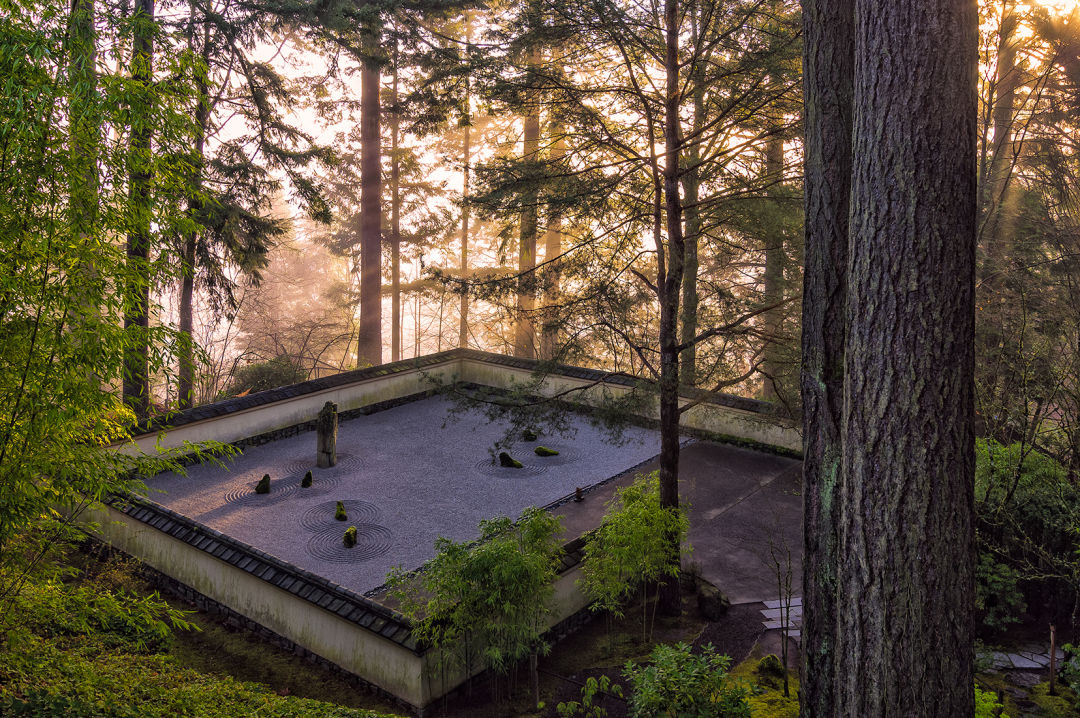
Morning is peaceful in the sand and stone garden.
Beyond the flat garden are several other areas to explore, such as the strolling pond garden, with its waterfall, koi pond, and zig zag bridge; the natural garden, which blends Japanese gardening and the wildness of nature; the sand and stone garden, representing traditional Japanese dry-landscape designs; and the tea garden, where you can view an authentic Kashintei tea house (which was actually shipped to Oregon in pieces from Japan in 1968).
Other prominent features of the historical gardens include the 18-foot Sapporo Pagoda—a pagoda lantern flanked by Japanese maple, rhododendron, and azalea which was gifted to Portland by the city of Sapporo. The two cities celebrated 60-years of sisterhood in 2019.
The Moon Bridge is another feature that beckons visitors to pause their stroll through the gardens and reflect while viewing the pond.
The Portland Japanese Garden was built in 1963 as an act of cultural diplomacy—an effort to share the culture, values, beliefs, and designs of Japanese culture introduced as a gift to the people of Portland.
“It was not too long removed from World War II. Portland civic leaders and Japanese cultural organizations wanted to create a garden not only as an attraction, but to heal the wounds of WWII,” says Will Lerner, the garden’s communications specialist.
The garden’s founders, according to Lerner, received racist protests when it was first being established including one of the first garden directors being physical assaulted on the grounds—a manifestation of misplaced hatred stemming from the war and the internment of Japanese Americans in Oregon and across the country.
“There was obviously a lot of depth and friendship before WWII, that’s among the tragedies of it, that those friendships and relationships got damaged” Lerner says. “The garden went a long way to help resolve that.”
Sixty years after its founding, the garden is still presented as an opportunity to build cultural understanding in a way that removes any language barrier. According to Lerner, the garden not only sees an abundance of visitors from Portland and the Pacific Northwest who come to immerse themselves in Japanese culture, but also people from across the United States. It is said that former ambassador of Japan Nobuo Matsunaga once visited the garden and said it was the most beautiful and authentic Japanese garden in the world outside of Japan.

Lanterns and other cultural symbols are found throughout.
Lerner says that one of the garden’s best features is that it brings nature to “human scale” in a way that allows greater connection to it. While many of the plants and features are scaled to be life-sized for visitors, there are also gigantic redwoods and cedars that enclose the space, giving the garden a sense of being set in a grand forest.
“The pathways are meandering, the sound of water is often present throughout most of the garden spaces, and the design of the garden spaces is incredibly intentional to get you to slow down, calm down and catch your breath,” Lerner says.
To visit the garden, tickets are available both at the front gate and online. Pre-purchasing allows you to skip the ticket line and ensures entry on busy days.
And be forewarned, the logistics of getting into Washington Park itself aren’t quite as tranquil as the experience of being there.
That means finding parking on SW Kingston Avenue or the minuscule lot next to the Japanese garden’s front gate can be tough. Plan to leave time to circle the block while waiting for a spot to open. Or, if you're smart, park up near the Oregon Zoo and ride Washington Park’s free shuttle back down. The park is also highly accessible via TriMet bus line 63 from Pioneer Courthouse Square, as well as MAX Red and Blue lines, which run east and west beneath it.
The Portland Japanese Garden is open from 10 a.m. to 6 p.m., Wednesday through Monday (closed Tuesdays). A variety of membership levels are available for the public to purchase offering unlimited free entry, as well as special member hours each day from 8 a.m. to 10 a.m. Regular adult tickets cost $21.95, $18.95 for seniors, $15.95 for youth aged 6-17, and free to children 5 and under. Cameras are allowed on the property, but those wishing to bring a tripod must pay an extra $10 fee.

